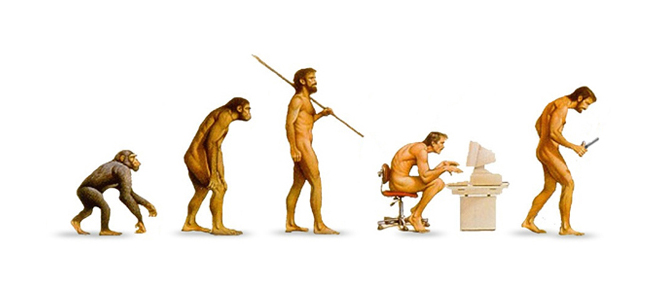
Stiff neck, aching upper back? Keep reading and find out how to use yoga for upper body release.
If you’re reading this on a smartphone or tablet, chances are you’ve unknowingly adopted the modern postural (mal)adaptation known as the iHunch.

Repeatedly hunching over your device causes the neck and head to jut forward and upper spine to collapse. According to US research, when you look down at your phone to text, check email, or play a game the force applied to the neck is the equivalent of four adult-sized bowling balls (about 27 kilograms).
If you think about how many hours a day you spend in this position, it’s not surprising that the iHunch can lead to “text neck” and other problems, such as:
- headaches
- reduced shoulder mobility
- tension, weakness or pain in the upper back
- clenched jaw and teeth grinding
- difficulty breathing.
With 18 muscles and 10 ligaments in the neck alone, we can develop a range of counter productive compensation patterns in response.

TIP: Chin up! Mobile technology isn’t going anywhere so, instead of looking down at your phone, hold it up in front of you or avoid looking down as often.
Source: Adam Katz Sinding/Le 21ème
If you want to learn more about how smart phones and social media are shaping your body and changing the way you move, listen to the Nutritiout Movement podcast. In episode 75, biomechanist and author Katy Bowman explains why she’s taking a three-month social media break.
Technology isn’t the only cause of neck, shoulder and upper back pain.
Daily activities like carrying a handbag or gym bag on one shoulder, driving, cooking and bending down to care for young children can exacerbate tension and create postural imbalance.
And then there are the physical effects of stress. When I’m under pressure my shoulders creep up around my ears and a vice-like grip takes hold of my jaw. Stress wraps its steely fingers around my forehead and digs its thumbs into the base of my skull. Although symptoms vary, tension in the upper body is usually part of the picture.
It’s no wonder we yearn for a massage!
TIP: Stretching throughout the day can improve mobility and reduce tension in your neck, shoulders and upper back.
Yoga for upper body release
Designed to release tension in the upper body, leaving your shoulders, chest, upper back and side body feeling open and relaxed, this short seated sequence can be done on the floor or in a chair. Many of the movements in this sequence can be done (inconspicuously) at your desk or while binge-watching the latest must-watch show on Netflix.
Please work within your range of motion, being mindful of any current injuries or limitations. If you feel pain, tingling, numbness or sharp sensation, back off or move onto the next pose and if you experience. You will need a yoga strap, theraband or a long scarf.
Time spent stretching, breathing and connecting with your body through yoga releases not just physical tension but mental tension, allowing you to release the stress, doubt and frustration which curbs your passion and holds you back.
Hands held high
Fold and bend
Strettttttch
Curve like a snake
Curl like a Child
REleaaaaaaase
Somewhere between my triangle pose
and my downward dog I forgot about work
and lost my cares about my family and friends
Perhaps it was on the bridge that my thoughts disappeared
and reappeared with greater clarity and purpose
as I stood still as a tree.
– Excerpt from Hands Held High, a poem by Candace Mickens
My final tip to relieve neck, shoulder and upper back tension is foot massage. Believe it or not, rolling the sole of the foot over a tennis ball or myofascial ball helps release fascia (connective tissue) along the backline of the body. Keep a ball under your desk at work, kick off your shoes and roll away the tension.
TIP: Roll and release. Treat your feet daily with a myofascial ball to minimise upper body tension.
Discover more in the Yoga for Modern Life series, designed to alleviate common aches and pain associated with prolonged sitting and use of technological devices.
– Georgina –











